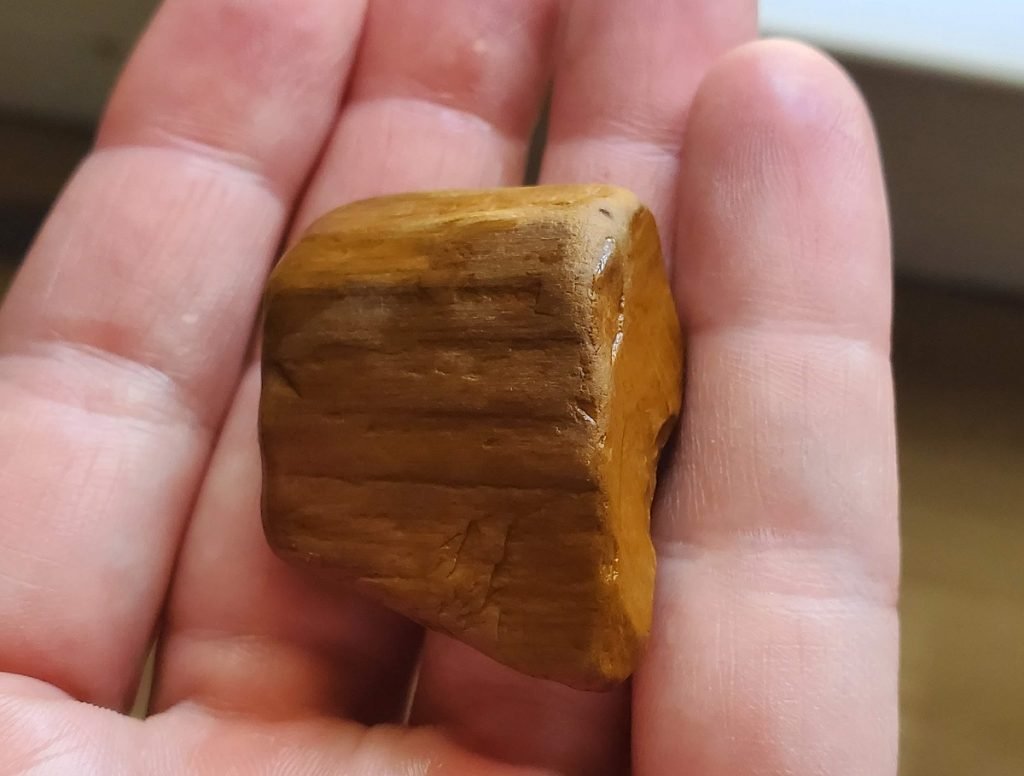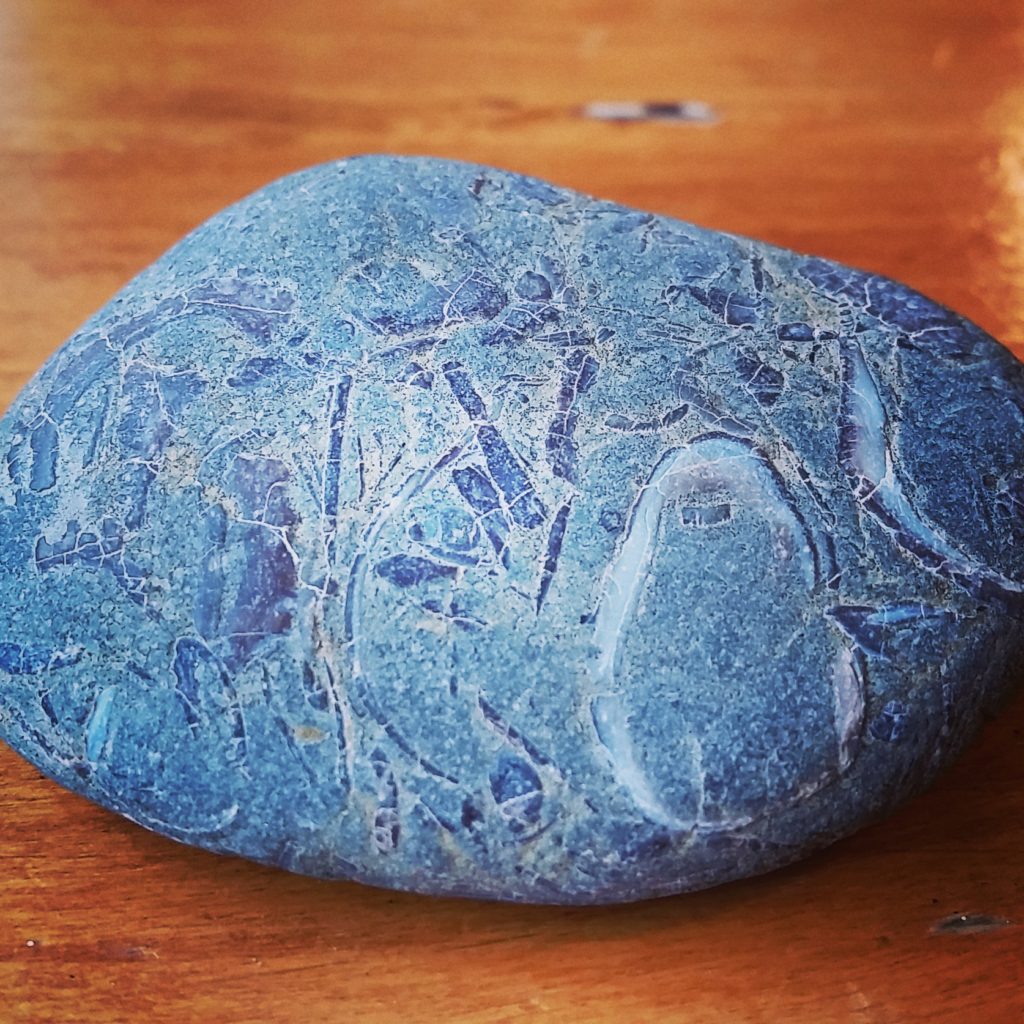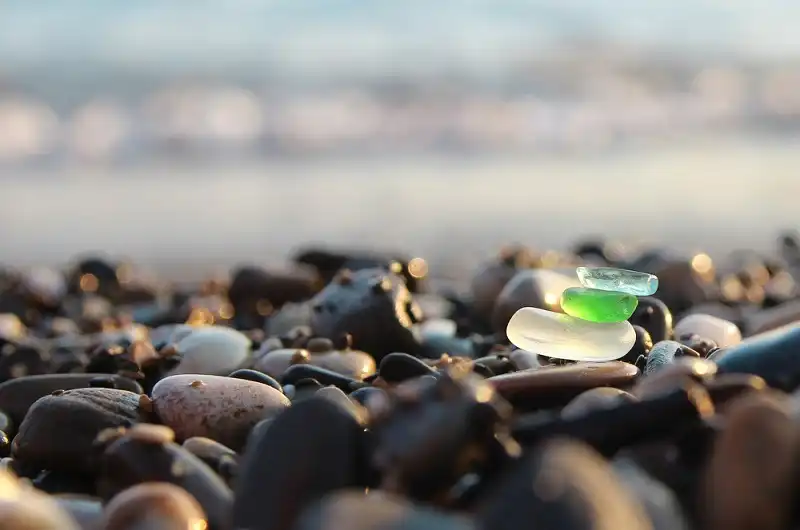Taking a relaxing walk along a beautiful ocean beach is one of the easiest and most enjoyable ways of rockhounding. Strolling along wet sand, the sound of the waves and seagulls filling your ears while scanning for treasures the ocean has dispersed all over the beach.
There’s nothing quite like it. You never know what kind of interesting things you might find while rock collecting on ocean beaches.
Beaches are excellent places to find agates, jasper, hag stones, petrified wood and even fossils. The list of interesting things to find doesn’t end there either. You can discover other collectible items on the beach such as glass balls or glass floats, beautiful and unique driftwood and of course, seashells. But there’s nothing better than finding a large agate or a piece of naturally tumbled petrified wood that’s been polished by nature herself.
What Kinds of Rocks Can Be Found on The Beach
There are so many different types of rocks on the beach that are just waiting to be found. Below is a little information for the most common types of beach stones you’ll most likely encounter.
Jasper

Jasper is variety of Chalcedony, and is usually a brown, yellow, or reddish color. It’s almost always multicolored and typically has very unique color patterns. What makes jasper so appealing to rockhounds are its unique color patterns and formations. Jasper can sometimes be a solid color but it’s more often found mottled, spotted, ringed, or striped. People have been collecting jasper for thousands of years. Even though it’s fairly common and affordable today, historically, jasper was a very valuable stone.
When rockhounding this type of beach stone, look for surfaces on the stone that are shiny when wet, but dull and porous when dry. The most common color of jasper that I’ve experienced are yellow and tan. Red jasper can also be common on some beaches. Green jasper is probably the rarest color to find. So if you find green jasper, you found a true gemstone!
Agates

Agates are a very unique translucent gemstone with beautiful color patterns and banding. Structurally speaking, agate is a banded form of finely-grained, microcrystalline Quartz. There are many distinctive styles and patterns to agates, but each stone is unique, with no two agates ever being the same.
When looking for agates on the beach, make sure that the sun is in front of you. If you get the angle of the sun just right, and since agates are translucent, it will appear as if the agates are filled with sunlight, making them easier to spot.
Beach agates are typically smaller in size. By the time they’ve reached the point on the beach where you can find them, they’ve been worn down into much smaller stones than when they began. So if wondering how to find large agates, look for areas with basalt flows close by. This may be where the agates are originating from, as opposed to traveling great distances in rivers and streams.
Oregon beaches are very well known for their agates. Here is a list of my top 3 favorite Oregon locations to find Oregon agates.
Petrified Wood

Petrified wood is actually a kind of fossil…a wood fossil! This wood fossil forms when the wood is covered by sediment and is protected from decay by eliminating oxygen and other organisms. Then groundwater that’s rich in dissolved minerals flows through the sediment.
The mineral rich water replaces the original wood with silica, calcite, pyrite, or other inorganic material such as opal. What’s left behind is a fossil of the original woody material. What’s amazing is that the wood fossils often show excellent details of the original bark and wood.
When looking for petrified wood on the beach, remember that there will still most likely be visual evidence of the old wood. Most pieces of petrified wood either have parallel lines of wood grain or even tree rings on them, depending on how the piece of wood was cut. Fresh petrified wood is tan or yellow in most cases. Some older petrified wood samples may turn dark red or even black.
Be careful not to confuse petrified wood with other common types of beach stones like mudstone, siltstone and sandstone. These stones also have parallel lines on them, but are also much softer than petrified wood.
For more information on where to find petrified wood take a look at my article, Best Places To Find Petrified Wood.
Fossils

Besides petrified wood, there are many other kinds of fossils you can find while rockhounding on the beach. At the beach, the most common kinds of fossils that you’ll find are fossils that are embedded in cliffs and in rocks or concretion type fossils. Typically, you would need to use a rock hammer and/or a chisel to dig fossils from out of a cliff or rock face. But please keep in mind that many beaches, if not most of them, have very strict restrictions on chiseling out or digging fossils out of a cliff. Be sure to know the local laws before you dig.
If you believe you are searching in a legal location and are wondering what kind of tools you might need as a new rockhound, check out my Ultimate Guide to Rockhounding Tools.
When looking for fossils at the beach, your best bet is to look for the round concretion fossils. These are often times very numerous and easy to find. When looking for concretions on the beach, look for round rocks with light colored stripes or markings. With concretions, the surrounding rock has begun to erode, exposing the encased fossil that’s inside. It is very common to find fossils of a variety of shells, shark teeth or even bone!
Sea Glass

Collecting sea glass has become especially popular over the last 20 years or so. Many have come to appreciate the historical and environmental significance of these unique pieces.
Sea glass is formed from glass containers that have been dumped at sea or washed out from the shore. This glass is broken up and tumbled by waves, sand, and rock for an average of 20-50 years until the edges have been smoothed away and the saltwater has left a frosty, smooth patina.
Gear To Consider For Rock Collecting On Ocean Beaches
As I mentioned earlier, the best time to get out and rockhound the beach is right after a storm and during the winter. Inevitably, this means lots of wind and rain for you, the rockhound.
Related: 7 Things You Can Do As A Rockhound In Winter
If you spend much time at all rockhounding, especially on or near the beach, then you probably already own most of the recommended gear.
The most important thing to keep in mind is that you want to be comfortable. In order to be comfortable, you need to be dry. So I recommend the taking the following gear with you while rock collecting on ocean beaches:
- Set of rain gear
- Rain boots/rubber boots
- A hat or rain hood
- Gloves
- Warm clothing underneath the rain gear
Where To Look For Rocks on Ocean Beaches
Some beaches will be plentiful for one kind of rock, while others beaches won’t offer up anything at all. The best thing you can do is a little bit of research online before you head out. That small amount of homework you do will go a long, long way in saving you time and frustration.
For example, here in Oregon, there are beaches that were once very well known for producing agates. As a matter of fact, they even named one of them Agate Beach. One would automatically think this would be a great place to hunt for agates. The truth is, I haven’t found an agate on Agate Beach for years. If someone visiting the area was to do a quick search before leaving, they would know there are much better beaches nearby where lots and lots of agates are waiting to be found.
Minding Ocean Tides While Rockhounding
The number one thing to remember while collecting rocks on ocean beaches are the tides. Not only are the changing tides a determining factor for rockhounding success, but they are a real safety concern. Always be mindful of sneaker waves and never get caught on rock outcroppings with an incoming tide.

The best time of day to look for rocks on the beach are during low tides. There are several reason for this. The water has already come up onto the beach and has moved the sand and debris around uncovering and revealing previously buried treasures. It’s also during high tide that the ocean will bring up onto the beach brand new material to be found.
Timing Your Rockhounding Beach Trip With The Seasons
The other thing to consider in timing your beach rockhounding trip are the seasons. If possible, you want to time your beach trip during low tourist season, when the beaches are not quite as heavily populated.
Summers are typically when beaches are very heavily crowded. This does not bode well for the rockhound because there is much more competition for each rock on the beach that’s waiting to be found.
Best Time Of Year To Rockhound On The Beach
Winter and early spring is generally the best times for rockhounds to collect rocks on ocean beaches. During these winter and early spring months, tourist crowds are smaller leaving many more rocks and other material on the beach for you to find.
Storms are also more frequent during the winter, which can uncover and deposit more rocks and other material for you on the beach. The best time to find agates, for example, on Oregon beaches are during the early spring, after a big storm and during a very low tide.
For more information on tides, please visit the NOAA website. It provides tide tables for every state in the US with ocean beaches.
Legal Considerations For Collecting Rocks on Ocean Beaches
Before heading out to rockhound the beach, you should always know the local laws and regulations regarding what you can and cannot take.. Every state has their own laws, so be sure to educate yourself before you head out.
Also know what land is private and what land is public. Private land will not always have a fence or be marked with signs. If you suspect the land where you want to rockhound is private, ask for permission. Landowners are almost always receptive to rockhounds who are open and honest with what it is they want to do on their land.
You May Also Like….
If you’re planning on spending much time at all looking for rocks and other treasures, you definitely want to take a look at my article, 5 Reasons To Use A Sand Dipper. These things are awesome for beach combing! You can also get more information on them here.
This tool isn't for everyone. I'm listing it here for those who just aren't able to reach down and pick things up off the ground as easy as before. So, if you spend much time beachcombing, then you'll want to give this one a try. It's well worth it.
- Great for those with trouble bending down to pick up items.
- Access Hard To Reach Spots
- Stay Dry
- Doubles as a Walking Stick
I can’t recommend the sand dipper enough! Every beachcomber should have one. You’ll never have to bend over again to grab those agates or other beach finds!
Now that you’ve got your Sand Dipper and all the info from this article, get out there and start looking!
If you want to know about other locations to find agates, check out my article, Where to Find Oregon Agates: 3 Not So Secret Locations.
Good luck!
- Online rock and mineral club for collectors of all levels!
- Find community with like-minded rock and mineral enthusiasts.
- Monthly Giveaways!
- Free Access to Entire Digital Library of Products (current and future products)*




